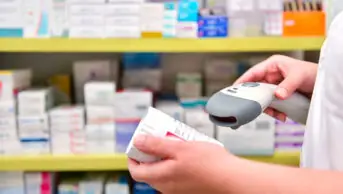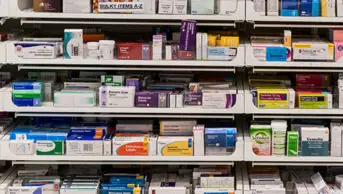
Shutterstock.com
The pharmaceutical industry have, in recent years, focused on development of so-called specialty drugs and have priced them aggressively. These prices, such as the US$1,000 per pill price for the hepatitis C drug sofosbuvir, are alarming for patients, employers, insurers, and governments. But the focus on single drugs or even the price per pill vastly understates the challenge that is now posed to the sustainability of both public and private healthcare systems. We are now likely to experience a tidal wave of new drugs with extremely high price tags that could undermine the affordability of health coverage. The industry must now work with other stakeholders to find new ways to reward innovation based on value to give patients access to life-saving drugs.
High prices
Drug development in the United States has been governed for the past 30 years by the Hatch-Waxman Act (1984) that set the terms for brand exclusivity and generic competition. This approach has, until recently, worked fairly well to balance the competing goals of rewards for innovation and affordability. The US pharmaceutical market is heavily weighted toward branded products in term of dollar volume, but weighted toward generics in terms of the volume of prescriptions. That balance is now facing an entirely new challenge on account of the high prices charged for the new generation specialty drugs, plus the year-to-year price increases for drugs already on the market.
Many new medicines, like sofosbuvir, offer enormous promise to patients. We have to ensure, however, that those new therapies can continue to be discovered and developed in a way that permits us to continue to afford them. This is the challenge of sustainability. The US already permits much higher prices for drugs than other countries, primarily because there is no effective price negotiation for new monopoly drugs. Manufacturers can set prices as high as they dare, seeking to maximise profits quickly before competing therapies become available. This pattern has recently become more pronounced as price levels have dramatically increased.
Since 2008, prices for brand name drugs have increased by 127% compared with an 11% rise in the consumer price index[1]
. The estimated number of US patients with annual medicines costs greater than US$50,000 increased by 63% in 2014, from 352,000 to 576,000 people in the United States[2]
. Research conducted by CVS Caremark (the prescription benefit management subsidiary of American retailer and healthcare company CVS Health) in 2013 projected that specialty drug costs will reach US$400bn a year by 2020, compared with US$80bn in 2013[3]
. These trends alone could force overall healthcare inflation back into unsustainable territory just as the large wave of post-war boomers enters their high-consumption years.
Public opinion polls show a high level of concern across the political spectrum as a result of recent prices. Recent polls conducted by the Kaiser Family Fund and Morning Consult both show a plurality of voters saying it is “extremely important” that US presidential candidates focus on making drugs more affordable[4]
. More than eight out of ten voters would support a presidential candidate who says that more must be done to make sure the drug companies are acting responsibly on pricing.
Little justification
There is little information available to evaluate or justify these price trends. Trying to evaluate the value of new therapies is extremely difficult because the industry withholds the data needed to do such studies. The pharmaceutical lobby (paid representatives of large pharmaceutical and biomedicine companies who seek to influence federal government policy) opposed permitting the federal government to conduct comparative effectiveness studies on their products. The US Food and Drug Administration considers only safety and efficacy, and does not address costs of development or the economic impact of new products compared with existing ones, unlike the UK medicines watchdog the National Institute for Health and Care Excellence. As a result, patients, doctors and others often must make judgements about new drugs without adequate information about their value or comparative effectiveness.
Leading physicians have recently become outspoken in their concerns about price trends, estimating that already as many as 20% or more of patients cannot afford the cost-sharing associated with high-cost drugs. The American College of Physicians, one of the largest physician groups in the United States, has been highly critical of escalating prices. More than 100 of the nation’s leading cancer doctors recently called on patients and other physicians to pressure drug makers to lower their prices[5]
.
Peter Bach from the Memorial Sloan Kettering Cancer Center, New York, has given voice to these concerns, saying: “When I think of the challenge of eradicating disease through drugs, I think this doesn’t work unless the patient actually gets the innovation. That’s the defect we should focus on.”
To counter the ever-higher costs of healthcare, consumers have been migrating to lower premium “high deductible” health insurance plans in great numbers in recent years. The result is more and more patients needing expensive drugs cannot afford them, even though they have insurance coverage. In addition, insurers seeking to protect their policyholders from ever higher costs are putting these drugs in high cost-sharing tiers, which have the same negative impact on the ability to gain access to new therapies. The underlying problem of high prices is creating real access barriers even with insurance in place.
Taking action
One year ago, members of the National Coalition on Health Care decided to act. The coalition is the nation’s oldest, largest, and most diverse multi-stakeholder group dedicated to affordable health reforms. The coalition has over 100 organisation members and supporters, including medical societies, businesses, unions, medical societies, faith-based organisations, insurers, and groups representing consumers, patients, and workers. These organisations collectively represent well over 100 million people in the United States.
The coalition formed the Campaign for Sustainable Rx Prices as a way to spark a public debate on these issues. The campaign’s initial focus has been on the hepatitis C medicines introduced by Gilead Sciences, Sovaldi (sofosbuvir) and Harvoni (lepipasvir/sofosbuvir). These effective drugs often were part of a course of treatment that cost US$150,000 per patient, with an estimated 3.2 million Americans who have the hepatitis C virus as potential targets. These medicines were priced as specialty drugs, despite the large infected population and despite the need for physician participation in administering the drugs. This effectively opened up a new frontier in drug pricing, breaking the boundaries of pricing self-restraint that had previously been observed.
The campaign now has broadened its focus to encompass other high-impact drugs that address cancer, hypertension, diabetes, arthritis, dementia and other widespread diseases. The goal is to engage the industry in productive conversations about alternatives to the present unsustainable course.
The campaign believes that greater transparency is a constructive first step forward. We are advancing five simple principles: drug manufacturers claiming a value proposition should provide documentation to justify such claims; drug manufacturers should make post-launch price increases more predictable to help patients and the overall health system budget for future costs; drug manufacturers launching new products should disclose likely populations, the launch price and any value proposition immediately upon FDA approval; drug manufacturers should make available all clinical data to help third party researchers evaluate comparative effectiveness and value; and drug manufacturer participation in organisations that influence coverage decisions should be transparent and free from conflicts of interest.
The entire health system in the United States is going through a transformation based on value incentives and transparency on cost and value. Now these same tools need to be applied to pharmaceuticals. The current trends in costs are unsustainable, so the search for alternatives based on greater information, competition, and payments based on value is an urgent one. The success of this campaign could have a ripple effect on the rest of the world in terms drug affordability and accessibility because of the size of the US pharmaceutical market. So the stakes are high for all concerned — the industry, the entire healthcare system, consumers and taxpayers. We cannot afford to wait to address this or we will be overwhelmed by uncontrollable costs of uncertain value.
John Rother is president and CEO of the National Coalition on Health Care.
References
[1] Rockoff JD & Silverman ED. Pharmaceutical companies buy rivals’ drugs, then jack up the prices. The Wall Street Journal 26 April 2015.
[2] Express Scripts. Super spending: US trends in high-cost medication use. 13 May 2015.
[3] Trefis Team. CVS’s earnings preview: generic substation, specialty drugs focus. Forbes. 10 February 2014.
[4] Caffrey MK. Will drug costs be the big political issue of 2016? American Journal of Managed Care 24 July 2015.
[5] Mayo Clinic Proceedings. Leading experts prescribe how to make cancer drugs more affordable. 21 July 2015.
You may also be interested in

NICE may be ‘systematically undervaluing’ medicines for severe conditions, says ABPI

Manufacturers repay nearly £600m to NHS in first three months of new voluntary pricing scheme
